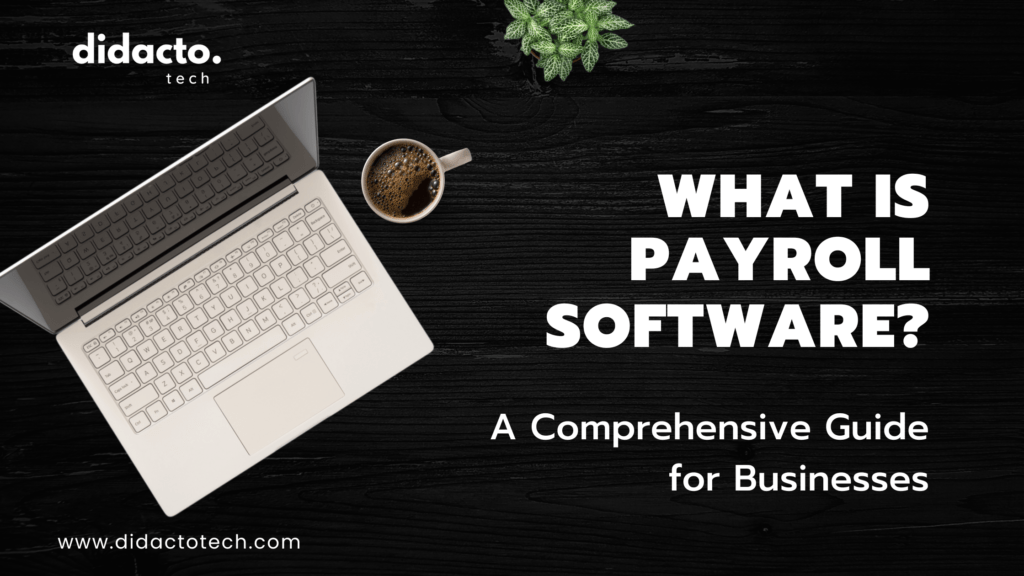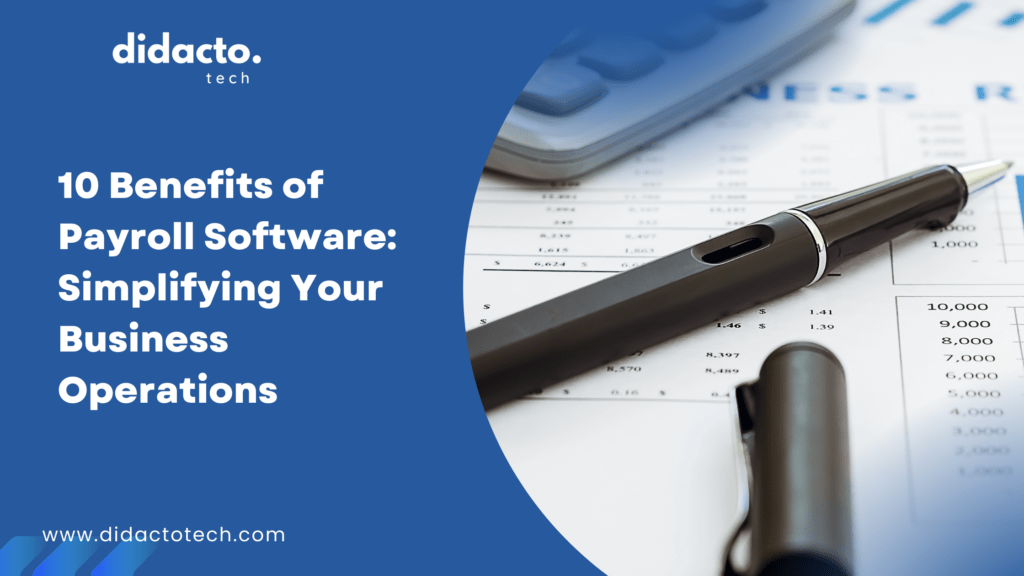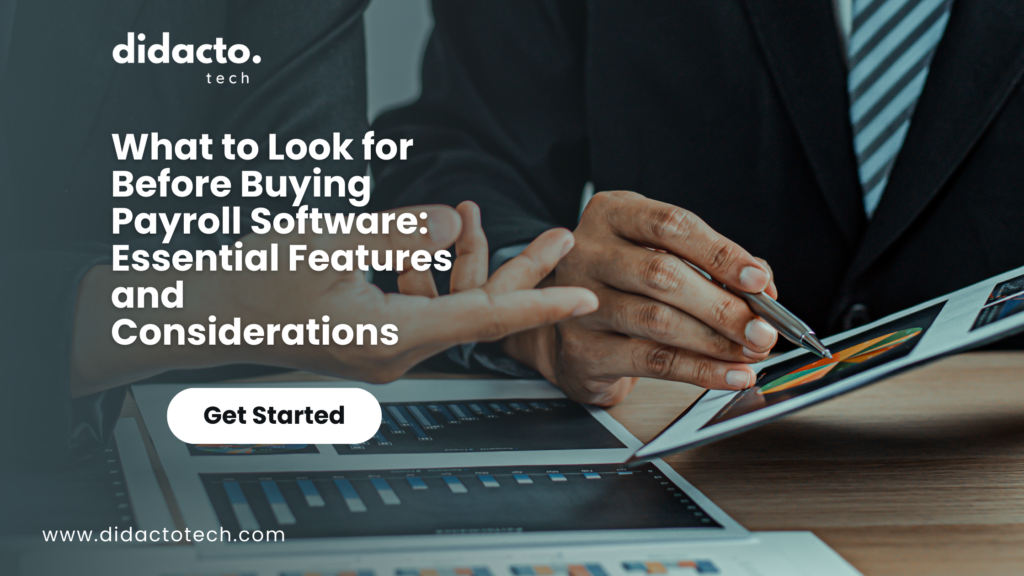Table of Contents
Introduction to Payroll Software
Payroll software is a digital tool designed to streamline and automate the process of calculating and managing employee compensation. This essential business technology has revolutionized how companies handle their payroll operations, making the task more efficient, accurate, and compliant with regulations.
At its core, payroll software answers the question, “What is payroll software?” by offering a comprehensive solution for managing employee salaries, wages, bonuses, deductions, and tax withholdings. It’s a vital component of modern business operations, particularly for companies looking to optimize their human resources and finance departments.
Key Features of Payroll Software
Understanding what payroll software is involves knowing its key features. Here are some essential components:
- Salary Calculation: Automatically computes employee wages based on hours worked, salary rates, and overtime.
- Tax Management: Calculates and withholds appropriate taxes, including federal, state, and local taxes.
- Deduction Handling: Manages various deductions such as health insurance, retirement contributions, and garnishments.
- Direct Deposit: Facilitates electronic transfer of wages directly to employee bank accounts.
- Reporting: Generates comprehensive reports for payroll, taxes, and other financial metrics.
- Time and Attendance Integration: Often integrates with time-tracking systems to accurately record working hours.
- Compliance Management: Ensures adherence to labor laws and tax regulations.
- Employee Self-Service Portal: Allows employees to access their pay stubs, tax forms, and personal information.
Benefits of Using Payroll Software
Implementing payroll software offers numerous advantages for businesses of all sizes:
- Time Savings: Automates time-consuming manual calculations and data entry.
- Accuracy: Reduces human error in payroll processing and tax calculations.
- Compliance: Helps businesses stay up-to-date with changing tax laws and regulations.
- Cost-Effective: Reduces the need for extensive payroll staff and minimizes costly errors.
- Data Security: Provides secure storage and management of sensitive employee information.
- Scalability: Easily adapts to growing businesses and changing payroll needs.
- Improved Employee Satisfaction: Ensures timely and accurate payments, boosting employee morale.
- Detailed Reporting: Offers insights into labor costs and financial performance.
Types of Payroll Software
When exploring what payroll software is, it’s important to understand the different types available:
- On-Premise Software: Installed and run on the company’s own computers and servers.
- Cloud-Based Software: Accessed via the internet, with data stored on remote servers.
- Hybrid Solutions: Combines elements of both on-premise and cloud-based systems.
- Enterprise Resource Planning (ERP) Modules: Integrated payroll functionality within larger business management systems.
- Small Business-Focused Software: Simplified solutions tailored for smaller organizations.
- Industry-Specific Software: Designed to meet the unique payroll needs of specific industries.
How to Choose the Right Payroll Software
Selecting the appropriate payroll software for your business involves considering several factors:
- Business Size and Complexity: Ensure the software can handle your current and future payroll needs.
- Budget: Consider both initial costs and ongoing fees.
- Integration Capabilities: Look for software that can integrate with your existing HR and accounting systems.
- User-Friendliness: Choose a solution with an intuitive interface for easy adoption.
- Compliance Features: Verify that the software stays updated with tax laws and regulations.
- Customer Support: Evaluate the level of support offered by the software provider.
- Scalability: Select a system that can grow with your business.
- Security Measures: Ensure robust data protection and privacy features.
Implementing Payroll Software in Your Business
Successfully implementing payroll software requires careful planning and execution:
- Assessment: Evaluate your current payroll processes and identify areas for improvement.
- Data Preparation: Organize and clean your existing payroll data for migration.
- Training: Provide comprehensive training for staff who will use the new system.
- Testing: Conduct thorough testing before full implementation to identify and resolve issues.
- Phased Roll-out: Consider implementing the software in stages to minimize disruption.
- Ongoing Support: Establish a support system for addressing user questions and concerns.
- Regular Reviews: Continuously assess the software’s performance and make adjustments as needed.
Common Challenges and Solutions
While payroll software offers many benefits, businesses may encounter some challenges:
- Data Migration Issues:
- Solution: Carefully plan and execute data transfer, involving IT professionals if necessary.
- Resistance to Change:
- Solution: Communicate the benefits clearly and provide adequate training and support.
- Integration Problems:
- Solution: Choose software with robust integration capabilities and work closely with vendors.
- Compliance Concerns:
- Solution: Regularly update the software and stay informed about changing regulations.
- Technical Glitches:
- Solution: Establish a strong relationship with the software provider’s support team.
The Future of Payroll Software
The landscape of payroll software is continually evolving:
- Artificial Intelligence: AI will play a larger role in predictive analytics and decision-making.
- Mobile Accessibility: Increased focus on mobile-friendly interfaces for on-the-go management.
- Blockchain Technology: Potential use in securing payroll transactions and data.
- Gig Economy Integration: Adapting to handle more complex, flexible work arrangements.
- Enhanced Automation: Further reducing manual interventions in payroll processes.
- Data Analytics: More sophisticated reporting and insights capabilities.
Conclusion
Understanding what payroll software is and how it can benefit your business is crucial in today’s fast-paced business environment. By automating and streamlining payroll processes, companies can save time, reduce errors, and focus on strategic initiatives. As technology continues to advance, payroll software will play an increasingly important role in efficient business management.
When considering implementing payroll software, carefully assess your business needs, explore different options, and choose a solution that aligns with your goals and growth plans. With the right payroll software in place, you can transform your payroll operations from a time-consuming task into a strategic asset for your business.



